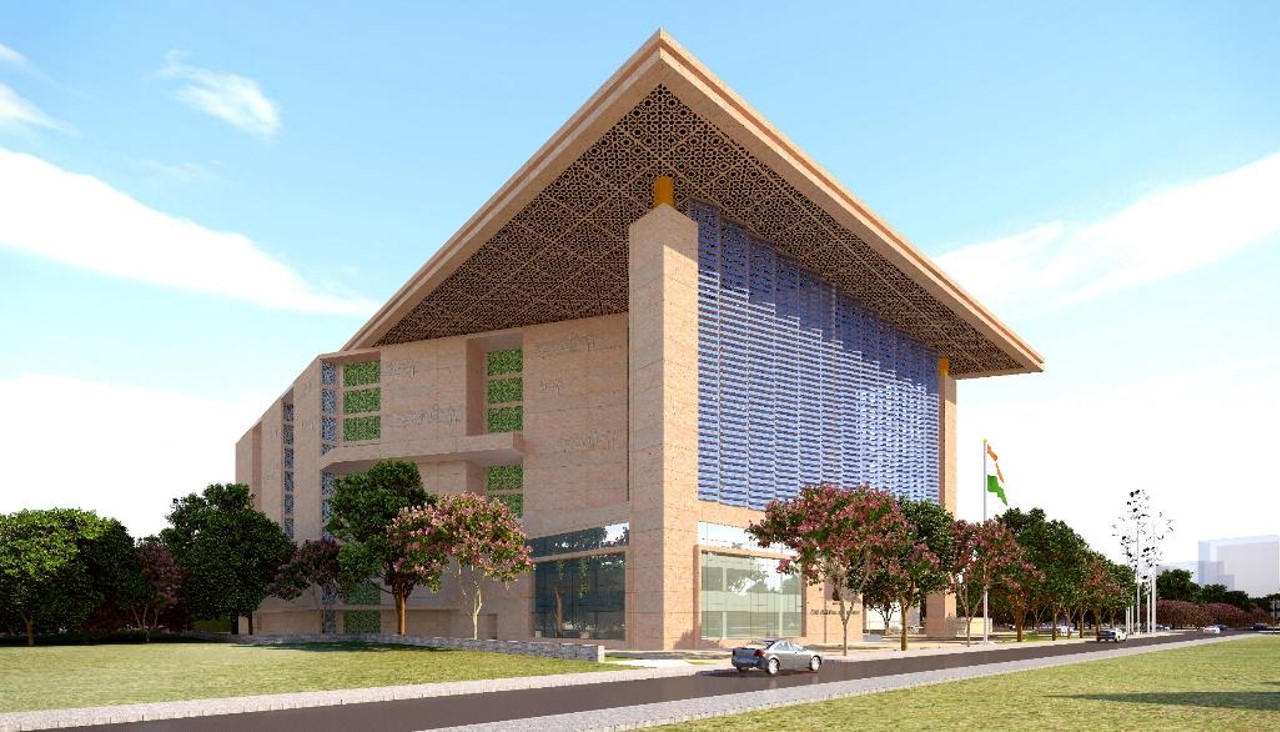The Ministry of New and Renewable Energy (MNRE) is constructing a new headquarters in New Delhi- Akshay Urja Bhawan, designed to be Net Zero Energy. The project uses a combination of climate responsive architecture with energy efficient technology to achieve this goal. It has been conceived as a 10-storeyed, 2,38,368 sft office space within a 2.76 acres site, with a north and a south wing connected by a service core. In the webinar, the project architect Bedanta Saikia and MEP consultant Samdarsh Nayyar break down the approach, design strategies and challenges behind the upcoming iconic addition to Delhi’s skyline.
The design team’s journey began with winning the competition for designing the MNRE’s new headquarters. Net-Zero energy was a key part of the design brief right from the beginning. For the team, the first step towards this was lowering the building energy demand using passive design strategies like proper orientation, massing strategies, shading and opting for energy efficient building systems. The next step was integrating solar photovoltaics into the building to meet this demand.
The team had a challenging site on their hands, one that was narrow and oriented along the unfavourable East-West direction. Their response was to tilt the South Wing to maximise its exposure to the North-East light. Further, an ancillary services core was planned along the western end to act as a heat buffer. Insulating double walls are used for the envelope.
On the systems side, the building uses a hybrid cooling system with a conventional and a radiant chiller, 215 TR each. Radiant chillers are about 33% more efficient- and they also don’t require big Air Handling Units. Further, the fresh air system is pre-cooled by toilet exhaust. The Building Management Systems is programmed to put a cap on the building load and optimize the running of various systems.
Let’s now look at the on-site energy production. Along with the ‘Solar Wall’, the building also has an integrated solar roof and together these can potentially generate up to 5295 kW-hr on an average every day. Compare this to the building’s daily average energy consumption of 5126.6 KW-hr and it’s well poised to achieve the Net Zero Energy mark!
The team’s integrated approach is evident in the design details. For example, a ‘solar wall’ helps shade the building facades while providing on-site power. Vegetated screens connect occupants to nature while providing diffused daylight indoors and improving air quality.
The MNRE HQ’s design reinforces the fundamental approach towards achieving net-zero- first reduce your energy consumption and only then look at a renewable energy supply.
This webinar was conducted on 28th May, 2019.


